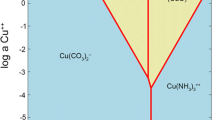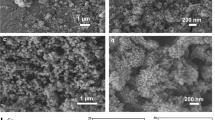Summary
In order to determine conditions that may provide greater solubilization of insouluble phosphate, the fungus Aspergillus niger was grown in a stationary culture containing modified citrate medium supplemented with 800 mg fluorapatite per litre. Solubilization of insouluble phosphate increased with fungal growth, reaching a maximum after 11 days of culture. Soluble phosphate levels were correlated with pH of the culture medium but not with titratable acidity values, probably due to the metabolic activity of the fungus resulting from consumption of sugar in the culture medium. Fructose, glucose, xylose, and sucrose were the carbohydrates that favoured fluorapatite solubilization the most when compared with galactose and maltose. Although increasing fructose concentrations in the culture medium favoured mycelial growth, increased total acidity and a fall in pH, soluble phosphate levels were reduced, probably owing to consumption by the rapidly growing fungus. Among the nitrogen sources tested, ammonium salts favoured the production of larger amounts of soluble phosphate than organic nitrogen (peptone or urea) or nitrate, corresponding to the lowest pH and highest titratable acidity values obtained.
Similar content being viewed by others
References
Agnihotri VP (1970) Solubilization of insoluble phosphates by some fungi isolated from nursery seedbeds. Can J Microbiol 16:877–880
Alexander M (1977) Introduction, to soil microbiology. Academic Press, New York
AOAC (1970) Official methods of analysis. Association of Official Analytical Chemists, Washington, DC, pp 9–32
Cochrane VW (1958) Physiology of fungi. Wiley, London
Crewther WG, Lennox FG (1953) Enzymes of Aspergillus niger. III. The sequence of appearance and some properties of the enzymes liberated during growth. Aust J Biol Sci 6:410–426
Crocken B, Nyc JF (1963) Utilization of L-α-glycerophosphorylcholine by a lecithin deficient strain of Neurospora crassa. Can J Microbiol 9:689–696
Duff RB, Webley DM, Scott RO (1963) Solubilization of minerals and related materials by 2-ketogluconic acid — producing bacteria. Soil Sci 95:105–114
Fiske CH, Subbarow Y (1925) The colorimetric determination of phosphorus. J Biol Chem 66:375–400
Hayman DS (1975) Phosphorus cycling by soil micro-organisms and plant roots. In: Walker N (ed) Soil microbiology. Butterworths, London, pp 67–91
Katznelson H, Bose B (1959) Metabolic activity and phosphate-dissolving capability of bacterial isolates from wheat roots rhizosphere and non-rhizosphere soil. Can J Microbiol 5:79–85
Kucey RMN (1983) Phosphate — solubilizing bacteria and fungi in various cultivated and virgin Alberta soils. Can J Soil Sci 63:671–678
Maxwell DP, Bateman DF (1967) Influence of carbon source and pH on the accumulation of oxalic acid in culture filtrates of Sclerotium rolfsii. Phytopathology 57:821
Mey P, Sayag D, André L (1986) Solubilisation de roches phosphatées par voie chimique ou microbiologique. CR Acad Agric Fr 72:81–89
Nahas E (1984) Fatores que influem no crescimento e na produção de lipase de Rhizopus oligosporus Saito. FCAVJ, Jaboticabal, Brasil
Rovira AD (1965) Plant root exudates and their influence upon soil microorganisms. In: Baker KF, Snyder WC (eds) Ecology of soil-borne plant pathogens; prelude to biological control. Murray, London, pp 170–186
Silva JMC, Lacout JL, Doux C, Andre L (1982) Influence des anions oxalique sur la solubilisation d'un phosphate apatique. CR Acad Sci Paris 295:823–825
Sperber II (1957) Solution of mineral phosphates by soil bacteria. Nature 180:994–995
Sperber JI (1958) Solution of apatite by soil microorganisms producing organic acids. Austr J Agric Res 9:782–787
Tsay SS, To KY (1987) Citric acid production using immobilized conidia of Aspergillus niger TMB 2022. Biotech Bioeng 29:297–304
Author information
Authors and Affiliations
Rights and permissions
About this article
Cite this article
Cerezine, P.C., Nahas, E. & Banzatto, D.A. Soluble phosphate accumulation by Aspergillus niger from fluorapatite. Appl Microbiol Biotechnol 29, 501–505 (1988). https://doi.org/10.1007/BF00269076
Received:
Accepted:
Issue Date:
DOI: https://doi.org/10.1007/BF00269076




